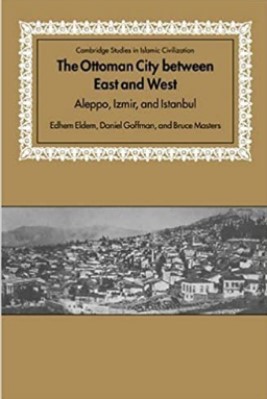The Ottoman city between east and west : Aleppo, Izmir, and Istanbul

| The Ottoman City Between East And West |
| Bruce Alan Masters, Daniel Goffman, Eldem Edhem |
| 129 |
| |
| PDF Direct Link |
| Click for Copy from Amazon |
THE OTTOMAN CITY BETWEEN EAST AND WEST – Book Sample
INTRODUCTION – THE OTTOMAN CITY BETWEEN EAST AND WEST
Was there an Ottoman City?
The study of the Ottoman city is rooted in the historiography of the Islamic city, which in turn has long been mired in attempts to respond to Max Weber’s exclusion of an Islamic class from his typology of the city in world history. 1 Weber, who defines the “city” as a self-governing commune whose inhabitants possessed a distinct sense of collective identity, argues that such an entity evolved, and thus becomes meaningful, only in Christian Europe.
In contrast to the normative European city, Weber characterizes Islamic and other non-European urban conglomerates as lacking the defining tradition of civic culture. Rather than enjoying the political autonomy characteristic of their European or even classical Greek and Roman counterparts, Weber contends that Middle Eastern cities were governed by bureaucratic representatives of an imperial power which were often ethnically and/or linguistically distinct from those they governed. Furthermore, Muslim cities were inhabited by distinct elan or tribal groups who competed with one another, rather than joining together for the common civic good in the creation of an identity that was specifically urban.
Weber perceives a reflection of this social alienation and political fragmentation of Islamic cities both in their physical structures and in the /very nature of Islam. He contrasts the winding streets, blind alleys, and walled, secretive houses of Middle Eastern cities to the open public spaces and rational topographies that characterized European cities moving toward modernity.
He also stresses the inherently urban nature of Islam as a religion and the decisive role it played in the development of urban institutions and space in the Islamic city, distinguishing it from the inherently secular development of European cities. Weber concludes that whereas diversity became a hallmark within and between European cities, Islamic cities al! share certain fundamental characteristics due to the pervasive role of Islamic law in both the public and private spheres of their …
To read more about the The Ottoman City Between East And West book Click the download button below to get it for free
Report broken link
Support this Website
 Don't Miss out any Book Click Join OpenMaktaba Telegram group
Don't Miss out any Book Click Join OpenMaktaba Telegram group